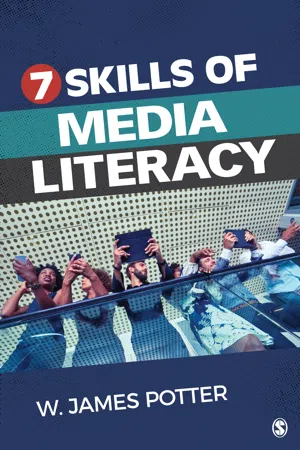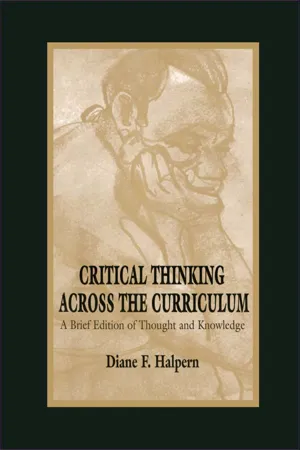Mathematics
Drawing Conclusions from Examples
Drawing conclusions from examples in mathematics involves using specific instances to make generalizations or infer broader principles. By analyzing patterns and relationships within the examples, mathematicians can derive overarching rules or theorems that apply to a wider range of situations. This process of induction is fundamental to the development and understanding of mathematical concepts.
Written by Perlego with AI-assistance
Related key terms
4 Key excerpts on "Drawing Conclusions from Examples"
- Kathleen Kelly(Author)
- 2020(Publication Date)
- Corwin UK(Publisher)
Models can also be used to demonstrate how a formula such as ‘the area of a triangle = base times perpendicular height divided by 2’ is derived, and practice can be given in proving this (e.g. by exploring squares, rectangles and parallelograms and dividing them into two triangles). Teacher modelling of procedures and solutions, asking pupils probing questions (e.g. how do you know?), providing opportunities to explain thinking and justify answers, and setting open-ended problems to be solved can all help to develop mathematical thinking and the language used in deductive reasoning. Activities to develop deductive reasoning are included in the structured lessons for one-to-one or small-group teaching (see items 6, 7, 8 and 9 on the lesson plan proforma in Chapter 14). Inductive Reasoning Inductive reasoning is based on conclusions drawn from observations rather than derived from facts. It involves reasoning from specific examples to generate an overall rule, although it does not provide a proof as the rule found may not apply in all cases. It is often associated with finding patterns and relationships among numbers or figures. It can be used to discover properties (e.g. of shapes) and to disprove conjectures by producing counter-arguments. Inductive and deductive reasoning are considered to be linked, and through developing proficiency in inductive reasoning students can start to use deductive reasoning (Murawska and Zollman, 2015). It is important, therefore, to provide sufficient opportunities for pupils to examine examples and look for patterns in order to produce a generalisation. At primary age (5–11) the focus is normally on inductive reasoning in order to develop the skills needed for deductive reasoning at secondary age (11+)- eBook - ePub
- W. James Potter(Author)
- 2019(Publication Date)
- SAGE Publications, Inc(Publisher)
Chapter 7 Deducing: Reasoning with Logic from General Principles- I. The Deduction Algorithm
- Step 1: Begin With an Observation
- Step 2: Identify a Relevant General Principle
- Step 3: Use the Two Premises to Reason Logically to a Conclusion
- II. Heuristics
- Heuristic 1: Probability Premise
- Heuristic 2: Conditional Reasoning
- III. Avoiding Traps
- Trap 1: Faulty Major Premise
- Trap 2: Irrelevant Major Premise
- Trap 3: Too Complex a Major Premise Is Needed
- Trap 4: Conditional Reasoning
- Trap 5: Irrational Reasoning
- Trap 6: Unwillingness to Build Knowledge Structures
- IV. Chapter Review
- Exercises
Deduction is the skill of using a few premises to reason logically toward a conclusion. The basic procedure of deduction follows a reasoning process in the form of a syllogism, which is a set of three statements. The first statement in the set is called the major premise ; it is usually a general principle or rule. The second statement is called the minor premise ; it is usually an observation. The third statement is the reasoned conclusion . We use logic to see if the observation fits the rule and then derive the conclusion.Perhaps the most familiar example of a syllogism is the one that uses the following two premises: (1) All men are mortal and (2) Socrates is a man. From this we can conclude that Socrates is mortal. The first premise is the major one; that is, it states a general proposition. The second premise is the minor one; that is, it provides information about something specific (in this case, a specific person) in a way that relates it to the major premise. Using logic, we see that the observation in the second premise fits the rule in the first premise and we conclude that Socrates is mortal.Deduction is the skill that the fictional detective Sherlock Holmes employed so successfully to make sense of clues and solve crimes. He knew a great deal about the physical world and about human behavior; this knowledge was his bank of major premises. He had keen powers of observation, so he was able to recognize clues that were the most relevant to solving a crime; his observations were his minor premises. When Sherlock Holmes found a clue (such as a scratch on a walking cane, mud on someone’s shoes, or the gardener taking walks in the middle of the night), he had a minor premise (the second statement in his syllogisms). He then searched his knowledge bank for a relevant general principle that could be used to explain the minor premise; this general principle became his major premise (the first statement in his syllogisms). He then used the general principle to explain the clue and this produced a conclusion. To Sherlock Holmes, this process of logical reasoning uses syllogisms. To us readers, he appeared to be a genius in his crime-solving ability but as he often said, “It’s elementary!” meaning that this was simple to him. And yes, the process of logical reasoning with a syllogism was easy for Sherlock Holmes; what was difficult was acquiring all the general principles and making good observations. - eBook - ePub
Fostering Children's Mathematical Power
An Investigative Approach To K-8 Mathematics Instruction
- Arthur Baroody, Arthur J. Baroody, Ronald T. Coslick(Authors)
- 1998(Publication Date)
- Routledge(Publisher)
Reasoning is a critical tool for many aspects of school and everyday life. Finding patterns and using if-then (deductive) reasoning can be central to science and other content areas. Critically evaluating the arguments of lawyers, advertisers, politicians, journalists, or others’ is essential to make many everyday decisions and to avoid being hoodwinked.Limitations and Misuses To evaluate their own and others’ conclusions effectively, students need to know the limitations and pitfalls of each type of reasoning (see Part I on page 2–26 of Investigation 2.4).Investigation 2.4: Evaluating Resasoning◆ Reflecting on the limits of reasoning + informally evaluating conclusions ◆ Whole classAn ability to evaluate their own and others’ conclusion is an essential skill for everyday life as well as mathematics. The questions of Part I are designed to prompt reflection about the limitations of intuitive, inductive, and deductive reasoning. Parts II to IV illustrate informal methods for evaluating a conjecture or a logical conclusion.Part I: Limitations of Reasoning (◆ 5–8)- (a) Which straight line to the right is longer? (b) What kind of reasoning would children probably use to draw their conclusion? (c) How could they evaluate (check) their conclusion? (d) What point can this activity demonstrate?
- (a) Can you guess the rule used to choose the following numbers: 3,5,7? (b) What kind of reasoning was involved in drawing your conclusion? (c) Compare your conclusion to those of your group or class. Did everyone come to the same conclusion? (d) Even if everyone came to the same conclusion, is it necessarily true? Why or why not? (e) What point can this activity demonstrate?
- Consider deductive arguments A and B below, (a) Is each valid (logical)? (b) Is the conclusion of each true (reasonable)? (c) What point about deductive reasoning does this activity demonstrate?
Argument A: Argument B: Teachers are grossly overpaid. (Premise 1) Teachers are slaves. (Premise 1) Winnie is a teacher. (Premise 2) Slaves are underpaid. (Premise 2)
- eBook - ePub
Critical Thinking Across the Curriculum
A Brief Edition of Thought & Knowledge
- Diane F. Halpern(Author)
- 2014(Publication Date)
- Routledge(Publisher)
Reasoning is often taken to be the hallmark of the human species. Colloquially, reasoning tells us “what follows what.” When we reason, we use our knowledge about one or more related statements that we can reasonably believe are true to determine if another statement, the conclusion, is true. A conclusion is an inferential belief that is derived from other statements. The ability to reason well is a critical thinking skill that is crucial in science, mathematics, law, forecasting, diagnosing, and just about every other context you can imagine. In fact, I can't think of an academic or real-world context in which the ability to reason well is not of great importance.Many definitions of the term critical thinking identify reasoning as central to the concept as seen in the definition that was derived from three rounds of rankings by school administrators in the United States. The procedure they used to come up with their preferred definition of critical thinking is called the delphi technique, which refers to a method for achieving agreement among experts in some field. In this case, definitions were circulated among all participants three times. They agreed that “critical thinking is … cohesive, logical reasoning patterns” (Stahl & Stahl, 1991, p. 84).Psychologists who study reasoning have been concerned with how people process information in reasoning tasks. The fact is that in our everyday thinking, the psychological processes quite often are not logical. In a classic article on the relation between logic and thinking, Henle (1962) noted that although everyday thought does not generally follow the formal rules of logic, people use their own imperfect rules. If we were not logical, at least some of the time, we wouldn't be able to understand each other, “follow one another's thinking, reach common decisions, and work together” (Henle, 1962, p. 374). To demonstrate this point, stop now and work on one of the problems Henle posed to her subjects in one of her studies:A group of women were discussing their household problems. Mrs. Shivers broke the ice by saying: “I'm so glad we're talking about these problems. It's so important to talk about things that are in our minds. We spend so much of our time in the kitchen that, of course, household problems are in our minds. So it is important to talk about them.” (Does it follow that it is important to talk about them? Give your reasoning.) (p. 370)
Learn about this page
Index pages curate the most relevant extracts from our library of academic textbooks. They’ve been created using an in-house natural language model (NLM), each adding context and meaning to key research topics.



